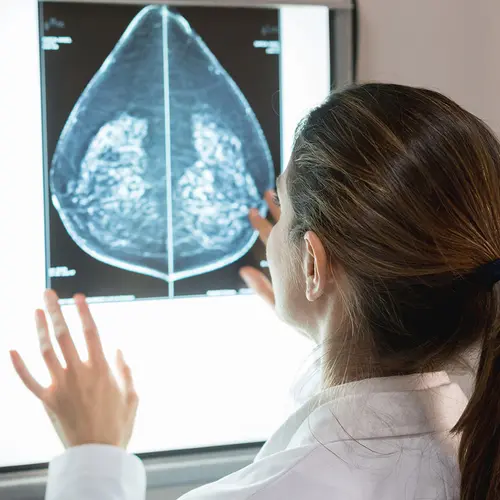June 14, 2023 – For women diagnosed with early-stage breast cancer, the risk of dying from the disease has fallen dramatically since the 1990s, new research shows.
During the 1990s, the risk of dying from breast cancer was 14.4%. This latest study found that risk to now be 4.9%. The researchers defined early breast cancer as the disease not having spread beyond the breast or nearby lymph nodes.
The findings are important because they will impact people’s decisions for treatment. Breast cancer patients are advised of their risk of death upon diagnosis, and calculations are made on how treatments such as surgery, chemotherapy, radiation, and other medications can impact their likelihood to survive the disease.
Published Tuesday in the journal The BMJ, the study involved data for more than 500,000 women living in England and diagnosed with early invasive breast cancer from 1993 to 2015, with follow-up data through 2020.
The highest rates of death from breast cancer were seen in the third year after diagnosis, the researchers found. Also, not all women had the same risk level of dying from the disease. The risk was as high as 20% for a group of about 1 in 20 women, while it dipped as low as 3% for another group of about 6 in 10 women.
The researchers evaluated the risk of death based on a variety of characteristics of patients and the cancer itself to determine if certain factors were linked to higher or lower risk levels. They found six factors that all strongly impacted the risk of death from 5 to more than 15 years after diagnosis. Those factors were:
- Age
- Whether or not the cancer was diagnosed during a regular screening
- How many lymph nodes the cancer had spread to
- The grade of a tumor, which refers to microscopic features
- Tumor size
- Whether or not the type of breast cancer was hormone sensitive
According to the CDC, about 264,000 women and 2,400 men are diagnosed with breast cancer annually, and each year the disease kills 42,000 women and 500 men in the U.S. Worldwide, there are 2 million new cases of breast cancer each year, the researchers wrote.
Beyond informing treatment decisions, the authors wrote that the findings in themselves “can be used to reassure most women treated for early breast cancer that they are likely to become long term survivors. They can also be used to identify the groups of women for whom the risk of breast cancer mortality remains substantial.”
One person who took part in the study said in a companion article published alongside the new research that having data about prognosis can impact the quality of life and ability to cope for a breast cancer patient.
“For the majority of women, the prognosis is good,” said Mairead MacKenzie, who is now a patient advocate. “This study backs that up and gives reassurance -- because, initially, everybody thinks they're going to die.”
